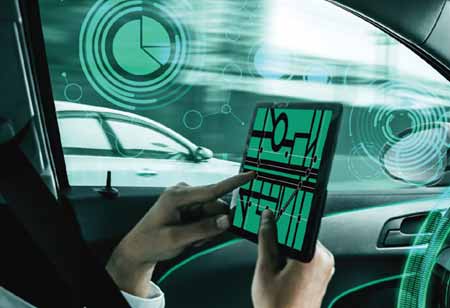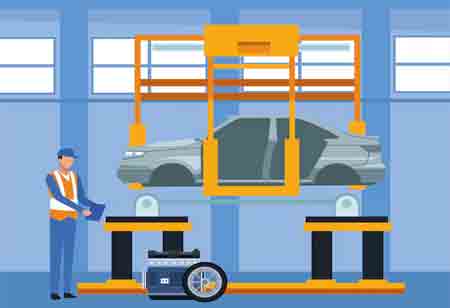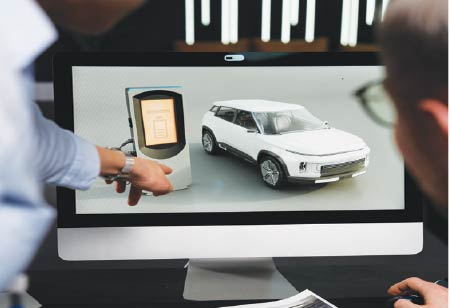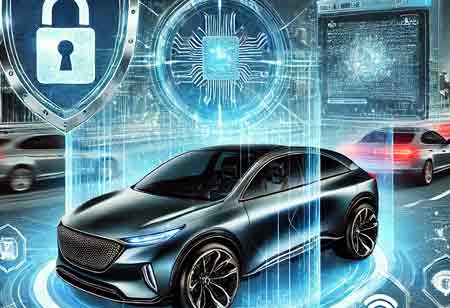THANK YOU FOR SUBSCRIBING
THANK YOU FOR SUBSCRIBING
Be first to read the latest tech news, Industry Leader's Insights, and CIO interviews of medium and large enterprises exclusively from Auto Tech Outlook
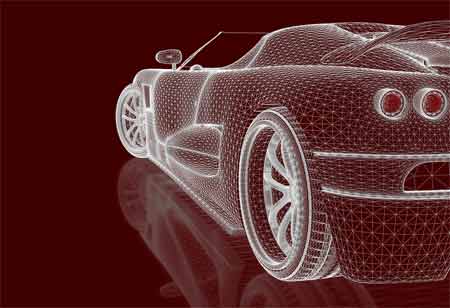
By
Auto Tech Outlook | Wednesday, June 07, 2023
Stay ahead of the industry with exclusive feature stories on the top companies, expert insights and the latest news delivered straight to your inbox. Subscribe today.
Image sensors have become an essential component of modern vehicles, enabling advanced driver assistance systems (ADAS) and autonomous driving features that have transformed driving, making it safer, easier, and more comfortable.
FREMONT, CA: Currently, the automotive industry uses CCD (charge-coupled device) and CMOS (complementary metal oxide semiconductor), which are electronic eyes made of semiconductors. They both use photodiodes, however, their manufacturing procedures and signal reading methods are different.
Each capacitor in a charge-coupled device (CCD) image sensor array carries an electric charge proportional to the light intensity of the pixel. The last capacitor in the array discharges its charge into a charge amplifier that transfers data in a bucket-brigade fashion. Each capacitor in the array is connected to its neighbour by a control circuit. A photodiode and a CMOS transistor switch are included in each pixel of a complementary metal oxide semiconductor (CMOS) image sensor, which allows the pixel signals to be amplified separately. By adjusting the matrix of switches, it is possible to access the pixel signals directly and much more quickly than a CCD sensor. A further advantage of each pixel having an amplifier is that less noise is produced when interpreting the electrical impulses produced from the captured light.
Applications of Imagine Sensors in Automobiles
Advanced Driver Assistance Systems (ADAS): Image sensors are largely used in advanced driver assistance systems (ADAS), which automate, simplify, and enhance car systems to help drivers drive more safely and effectively. There are many ADAS technologies, including electronic stability control (ESC), blind spot detection, driver behaviour monitoring, automatic emergency brakes, parking assistance systems, pedestrian detection, night vision, tire pressure monitoring system (TMPS), traffic signal recognition system (TSR), forward collision warning systems, lane departure warning systems, adaptive cruise control (ACC), etc.
To provide real-time information on the environment around the vehicle, ADAS systems use a combination of cameras, radars, and other sensors. Image sensors are essential components of ADAS systems because they deliver high-resolution images that computer vision algorithms analyse and utilise to recognise obstacles, pedestrians, and other cars in the path to prevent accidents.
The use of rear- and front-facing cameras as image sensors in ADAS systems is one of the most common. When driving vision is impaired by low visibility situations, such as fog or heavy rain, the front-facing cameras are quite helpful. Rear-facing cameras, on the other hand, are particularly useful for parking and manoeuvring in limited spaces as they offer a clear view of the region behind the car. Internal usage of image sensors in the cabin monitoring system, which employs cameras to view the inside of the car and track passengers' activities to alert the driver about passenger safety, is another application for image sensors in automobiles. In advanced vehicle lighting systems, image sensors detect oncoming vehicles and adjust beam patterns to avoid blinding the other driver.
The industry of making automobiles is another use for image sensors. In particular, in extremely quick production processes, high-speed image sensors used in the car manufacturing sectors enable thorough flaw identification. As a result, imaging systems are increasingly being used for quality and process control. Additionally, image sensors guarantee micrometre-accurate assembly tolerances, flawless surfaces all the time, and error-free circuits on the chips and microcontrollers that are becoming more common.
Improved driving performance and increased car and road safety are supported by ADAS. Human-machine interfaces (HMIs) and sensors are used in ADAS to identify driver mistakes, and adjacent obstacles, and take appropriate action to increase safety. Most car crashes are caused by human mistakes. With the use of technologies that can warn the driver of potential dangers, put in place safety measures, and, in certain cases, assume limited control of the vehicle, ADAS are used to improve, automate, and adapt vehicle technology to increase safety. Common ADAS features include automated lighting, adaptive cruise control, satellite navigation, traffic alerts, parking assistance, lane centring, and lane departure alerts.
To identify both what the driver can see and what the driver hasn't seen or can't even see, ADAS sensors are required. Different sensor technologies, each with unique characteristics, are already in use. Additionally, sensor fusion—the employment of many sensors with complementary capabilities—is becoming more common. For instance, adaptive cruise control (also known as inter-vehicle distance control), front collision warnings, autonomous emergency braking (also known as collision damage mitigation braking control), blind-spot monitoring, and parking assistance can all be implemented using LIDAR or radar in conjunction with vision systems.
The key to ADAS is the utilisation of sensor data to analyse the operating environment of the vehicle and compare it to safety parameters. Automotive imaging, LIDAR, radar, image processing, computer vision, multi-axis inertial motion, and in-car networking are some of the sensors that make up this group.
Due to advancements in image sensor technology, the performance of ADAS and Autonomous Vehicles (AV) systems has significantly improved in recent years, making them more dependable and precise. As a result of its ability to deliver extremely accurate depth information, lidar technology is becoming more and more used in ADAS and AVs. Similarly, 3D image sensors may record depth data, which is necessary for ADAS and AVs to perceive depth. This precise depth data can then be used in an automobile to recognise and categorise things in 3D space.
In general, the future of image sensors in automotive applications appears bright, and more sophisticated sensors are anticipated to support the development of safer and more effective ADAS and AVs by giving more accurate and trustworthy data.
 Copyright © 2025 AutoTech Outlook. All Rights Reserved | Privacy Policy | White papers | Subscribe | Sitemap | About us | Feedback Policy | Editorial Policy
Copyright © 2025 AutoTech Outlook. All Rights Reserved | Privacy Policy | White papers | Subscribe | Sitemap | About us | Feedback Policy | Editorial Policy 
